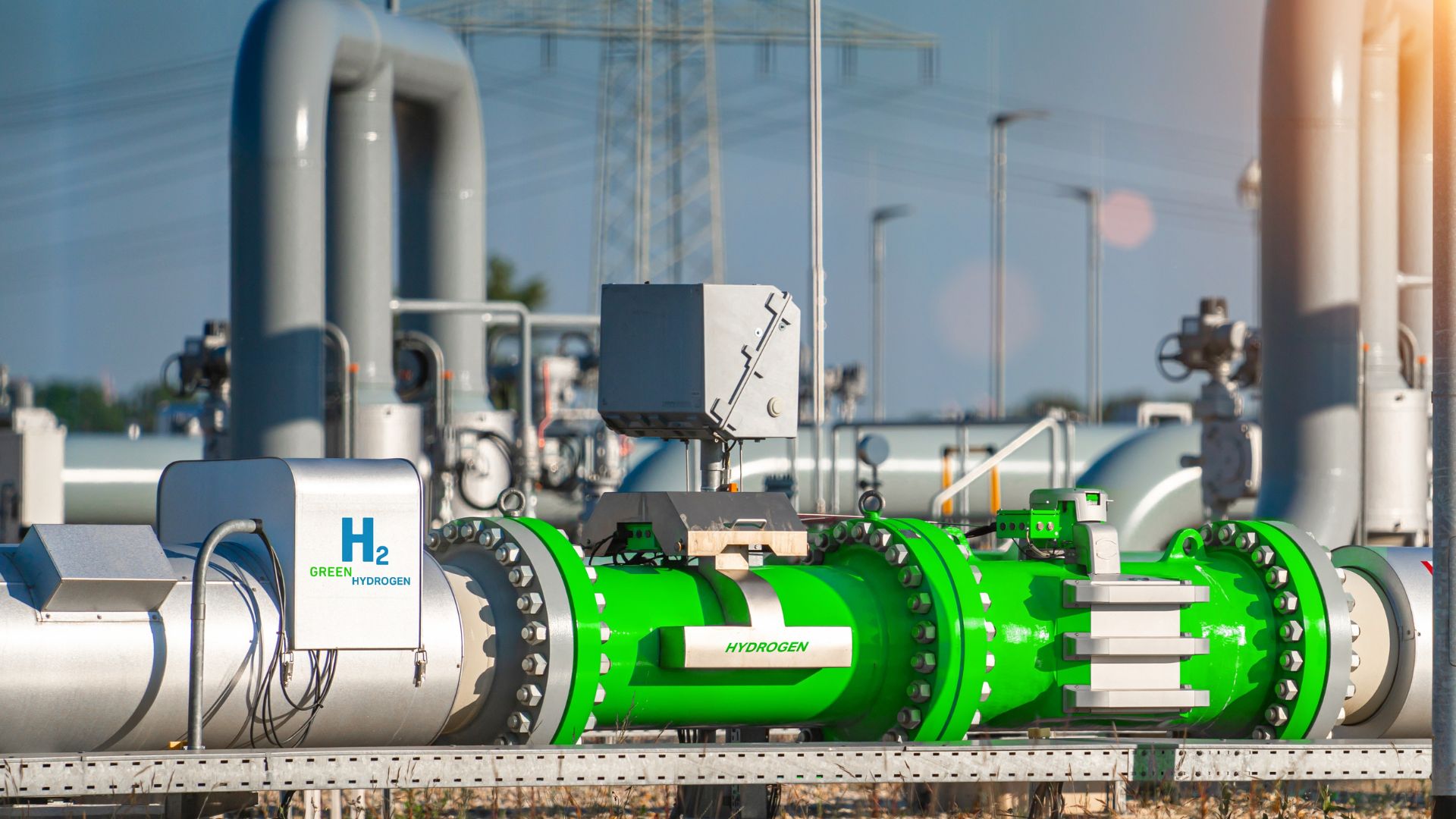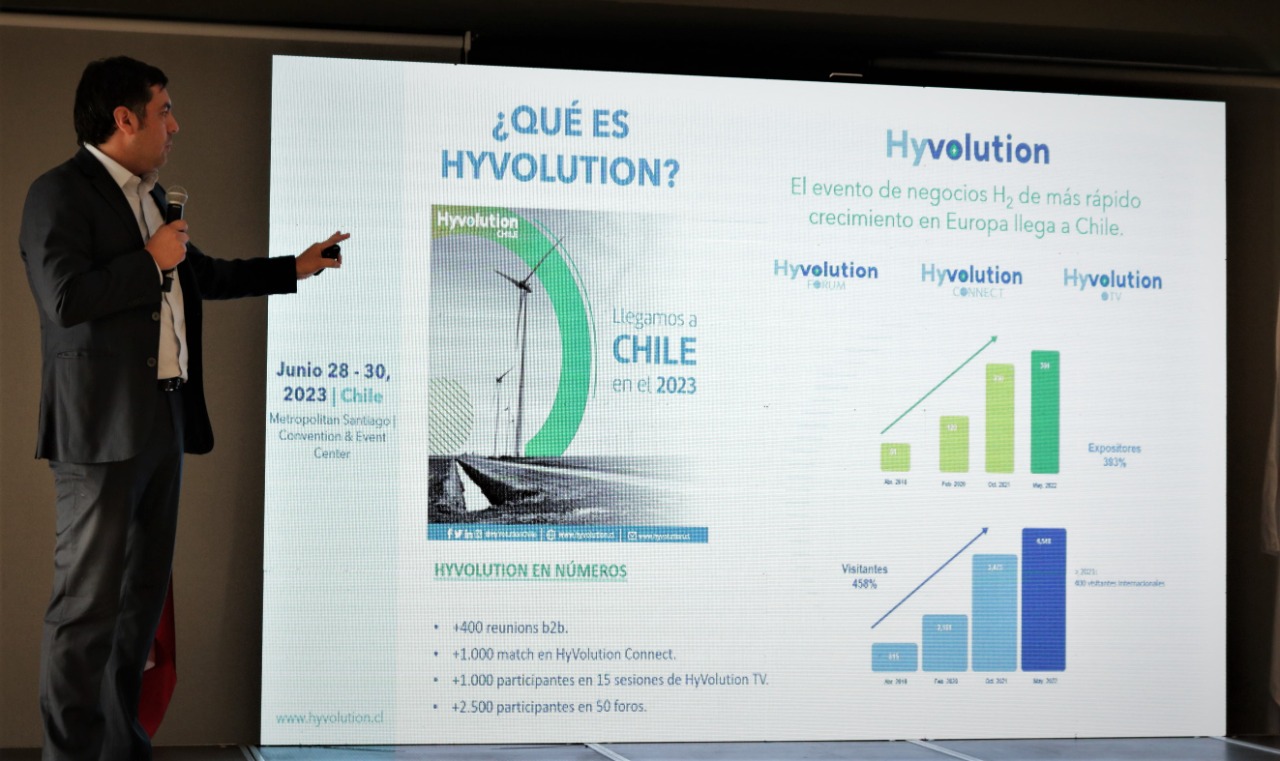
The Minister of Energy, Diego Pardow, delivered the Green Hydrogen Plan 2023-2030 to President Gabriel Boric, which contains a series of actions to deploy this industry in Chile. The process involved renowned political figures such as former President Michelle Bachelet and former Minister of Energy, Juan Carlos Jobet. At the local level, Governor Ricardo Díaz and the scientist and former constitutionalist Cristina Dorador were also involved in this process. The plan includes 81 actions and 18 lines of work, highlighting a first stage (2023-2026) for investments, standards, regulations, permits and research, along with a second stage (2026-2030) that considers land-use planning instruments, articulation of production chains, local development, certification and human capital prepared for the industry that can replace fossil fuels with clean energy generated by solar plants, leaving only a trace of water. In other words, in the future a truck could cross the desert using green hydrogen and arrive at its destination with water. President Gabriel Boric, in that sense, has been clear. We have a very powerful triad: copper, lithium and green hydrogen. And with green hydrogen we have a unique opportunity to innovate in order to put in place the necessary incentives to prepare and facilitate the creation of an industry of the future. In this way, the green hydrogen industry will substantially contribute to the productive reconversion of those localities that have coexisted with polluting industries, as is the case of Tocopilla and Mejillones. Therefore, the development of the industry will be with and for the communities, progressively moving from fossil fuels to clean fuels such as green hydrogen’, said the Energy Secretary, Dafne Pino, about the Plan. Investment and projects The regional governor, Ricardo Díaz, explained that the researcher Cristina Dorador had developed an improvement plan to better safeguard the environmental aspect related to green hydrogen, stressing that they do not want the same thing to happen as with copper and its problems of commutativity and low profits in the region. The projects that are currently in the environmental evaluation system have an investment of more than 2.7 billion dollars, which is undoubtedly a great incentive for investment here in the region, and that is only what is being reviewed in the SEA, because there are several initiatives that are outside the SEA that have already communicated their intention. Therefore, effectively the green hydrogen industry is a great industry that can bring about a change in the paradigm of how we understand development here in our region’, said Ricardo Díaz. On the role of the north, the energy potential in green hydrogen is high, increasing the possibilities for development, which is why – according to Díaz – foreigners are looking to invest in the area: ‘We have an advantage over Magallanes, which is the other region that is being discussed. Here, thanks to large-scale mining, you have potential customers for the use of this fuel, both in terms of green hydrogen and green ammonia’. This is why they envisage producing it close to the sources of consumption. Díaz highlighted a portfolio of special window projects that were created for investment, one of which is in Mejillones with the use of sewage to create green hydrogen through the circular economy. In the country, the only plant that produces green hydrogen is the plant we have with Cicitem, which is public and has been carrying out studies on the best conditions for the production of this element. We think that one of the first clients could be large mining companies and that this would allow us to leverage resources so that we can start thinking about ways to export’, added Governor Díaz.



 Related News
Related News HyVolution 2023: For the first time the largest Hydrogen Industry exhibition will come to Chile
HyVolution 2023: For the first time the largest Hydrogen Industry exhibition will come to Chile
 Successful first day of the Hyvolution Chile 2023 international congress
Successful first day of the Hyvolution Chile 2023 international congress
 Hyvolution 2023 Launch: Announcing that the largest gathering of the Hydrogen Industry will come to Chile
Hyvolution 2023 Launch: Announcing that the largest gathering of the Hydrogen Industry will come to Chile
